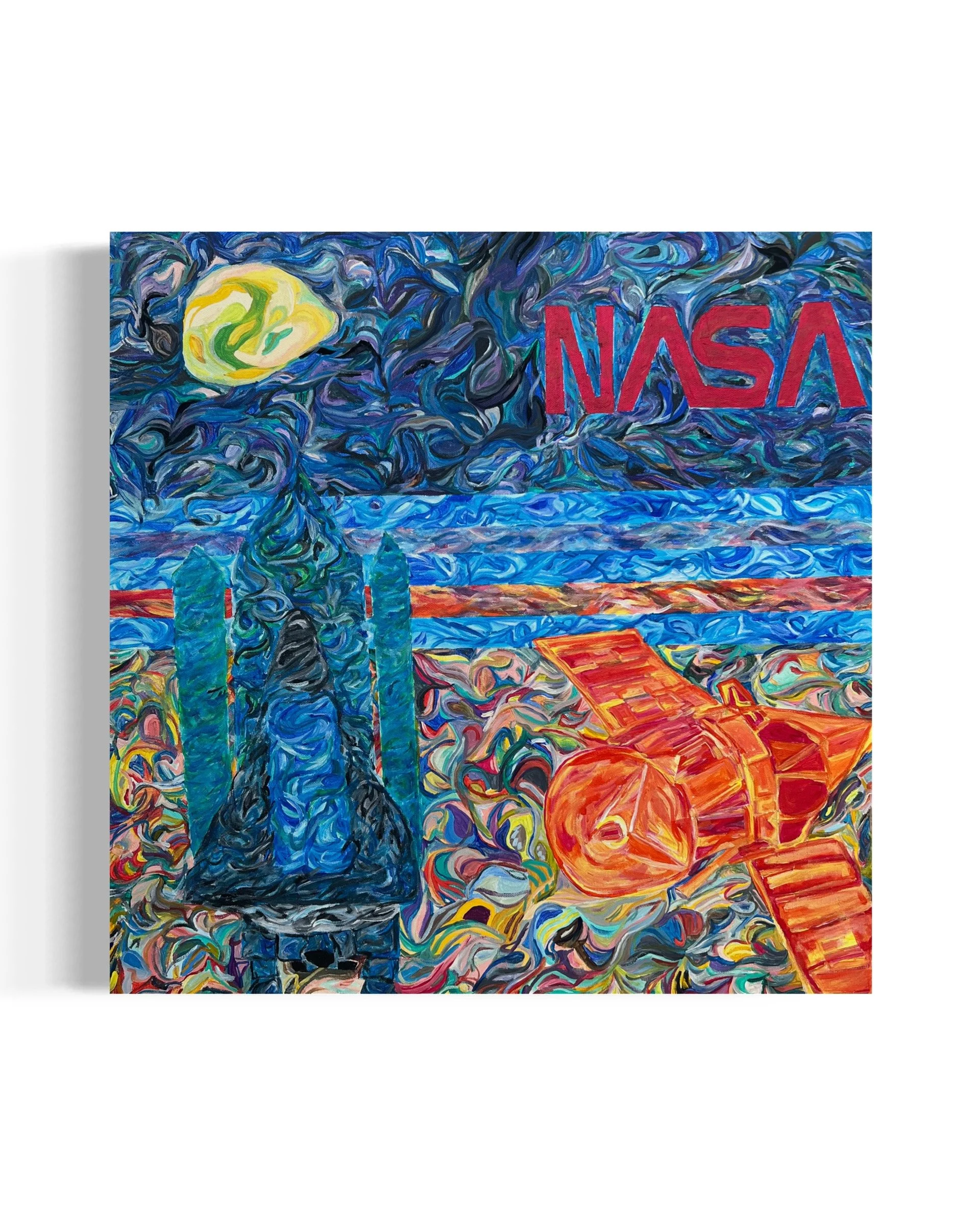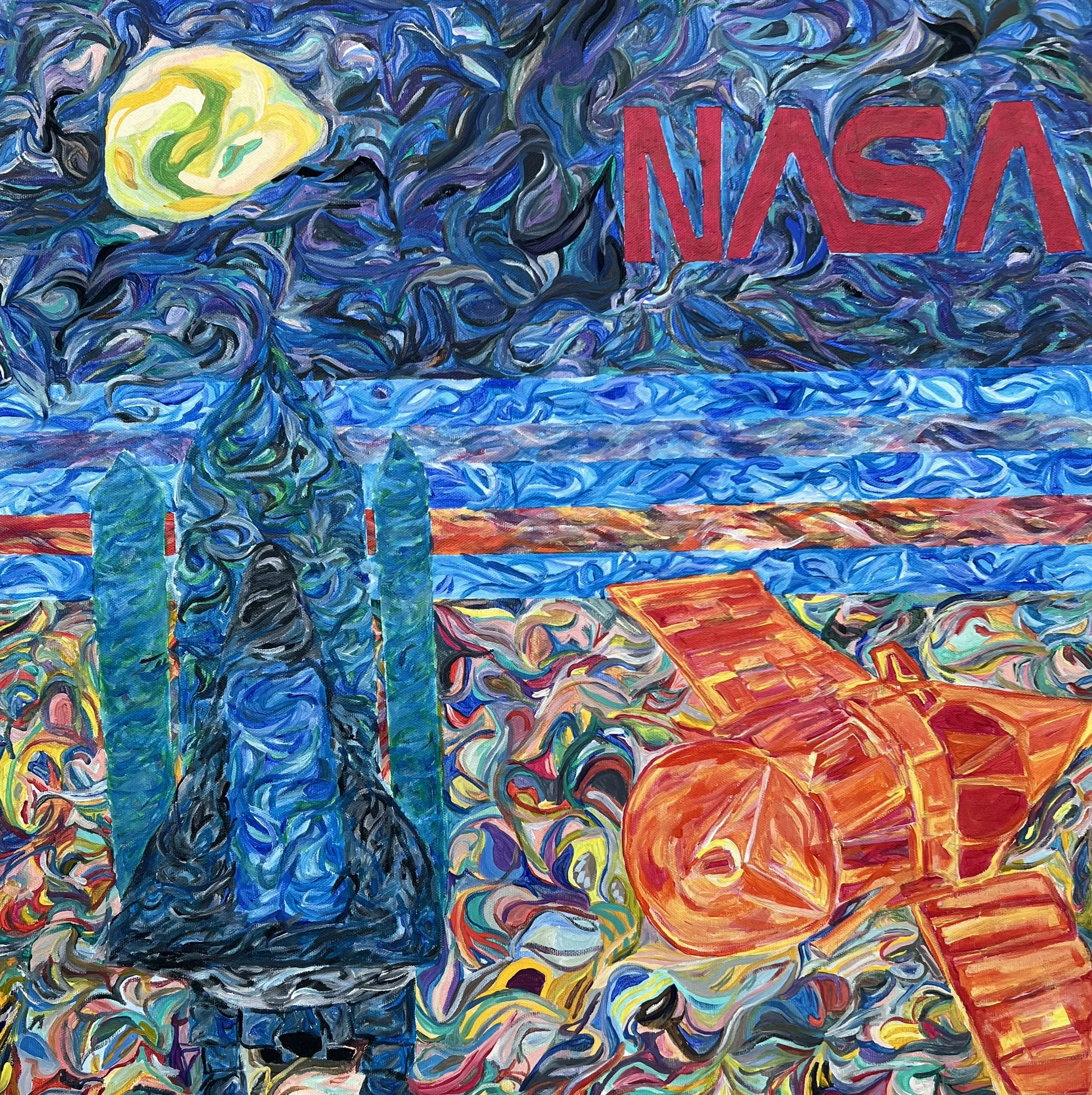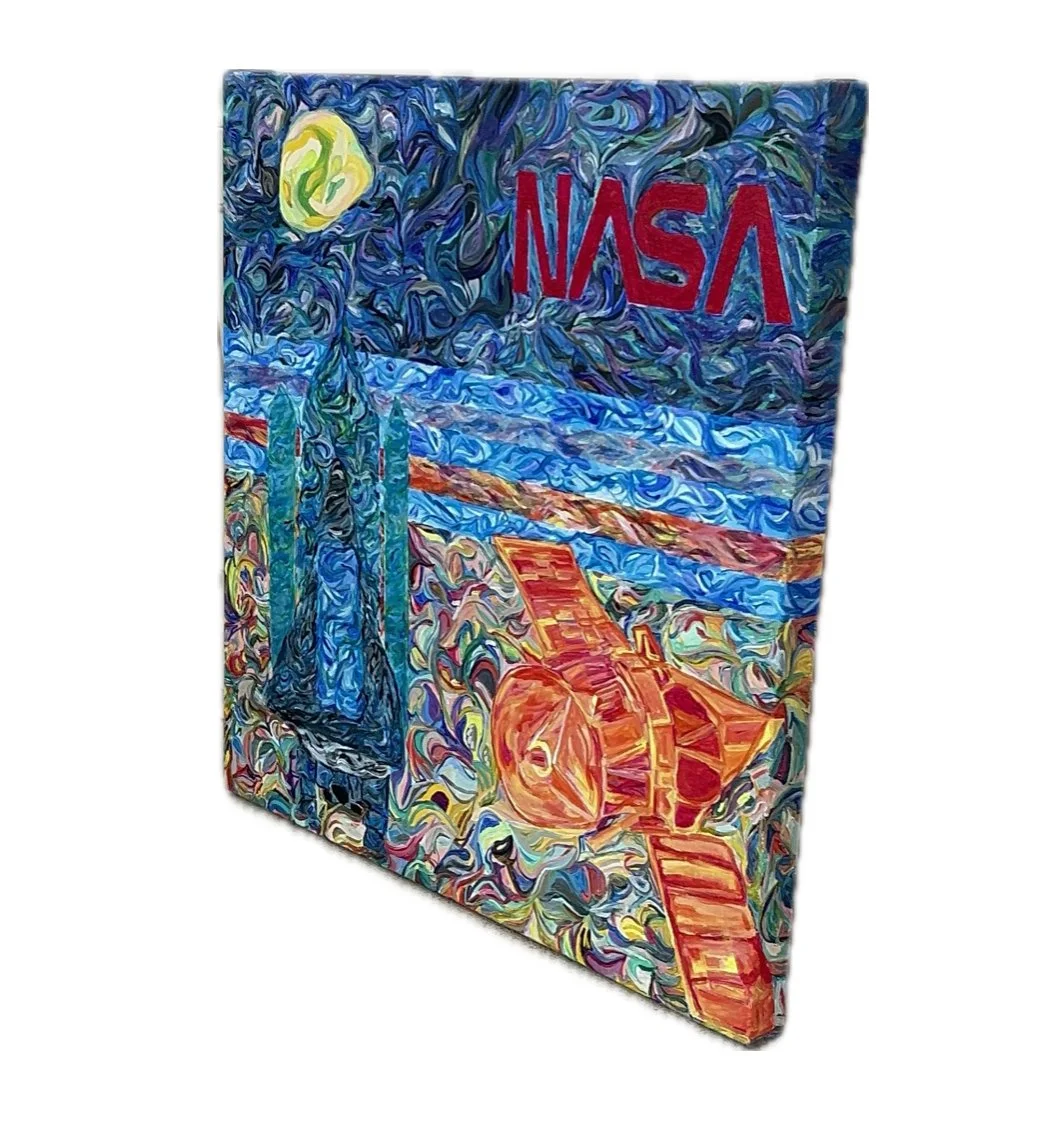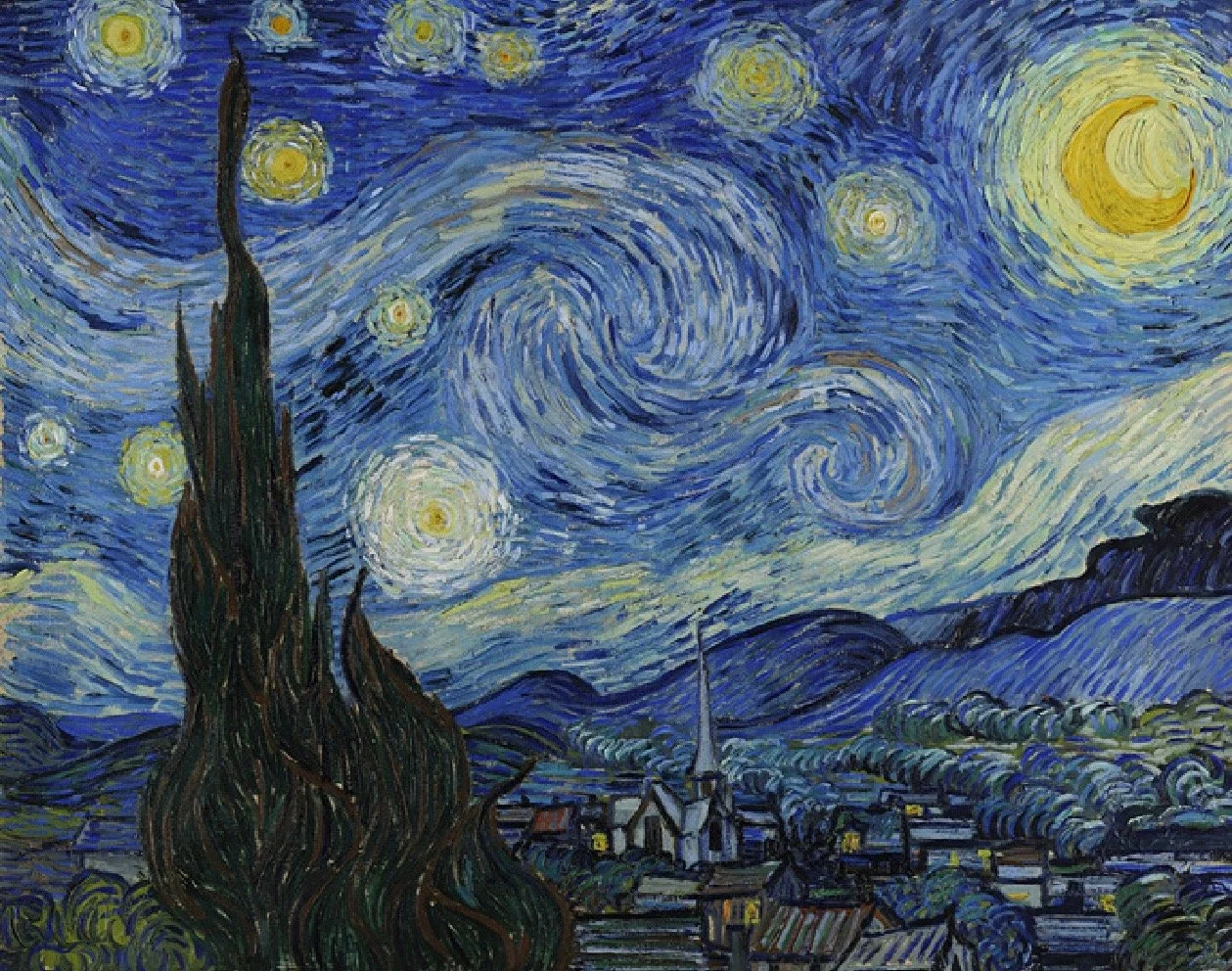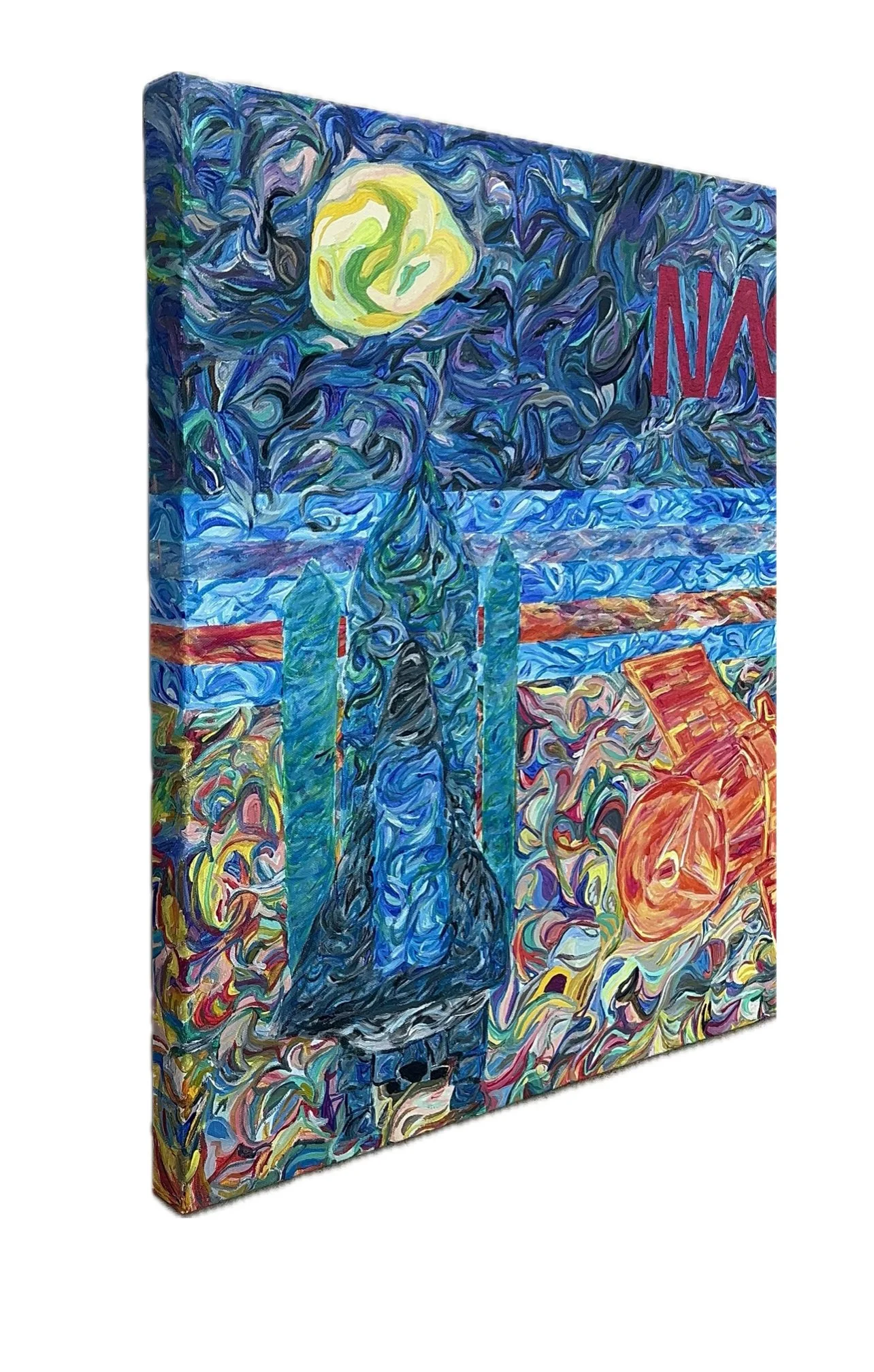A Starry Night in Houston
“A Starry Night in Houston” by AVM Hawkins 24 x 24 inches, Acrylic on Canvas.
Last month, I’ve finished painting, “A Starry Night in Houston.” This work has been two months in the making, painting it for several hours during my toddler’s nap and sleep times.
I typically tend to paint fairly large expressionistic paintings, taking up a great amount of space and materials in my studio. But I also tend to ebb and flow between contemporary paintings to detailed graphic designs. “A Starry Night in Houston,” allowed me to shift to more tedious work, allowing me to channel energy through small brush strokes, that inevitability contribute to a larger tapestry of meaning and storytelling.
My design style can be traced back to my childhood. It is my default style of drawing, deeply inspired by graffiti and street art. My art, and this particular style of creating has evolved tremendously since my childhood. This style has matured with my fine art, and it continues to expand, by taking the work, a step further each time.
I tend to get bored doing the same thing over and over.
Each time I experience deja vu, I try to take a detour, however slight.
Houston is affectionately known as "Space City.” I think everyone has the voice of Tom Hanks embedded somewhere deep in their subconscious memory, saying, “Houston, we have a problem;” (Tom’s most iconic line from the movie, Apollo 13).
Many local artists paint space themes when translating ideas about Houston. These images have become my go to visual references when I think of Houston. I embraced creating a painting using symbolic references of Houston’s deep space connection, but I wanted to do “my way.” I wanted to create a painting that not only represented space and technology, but that also honors my unique approach and process.
I often tend to create designs and contemporary paintings that are purely abstractions, without reference to form. But lately, I’ve been stepping outside of my comfort zone, taking my abstractions a step further—incorporating references, symbols and figures. Here, in “A Starry Night in Houston,” I embrace my free, improvised style used in my international series and added emblems that represent Houston’s connection to science, space and technology. I wanted to expound on my style to give the viewer clear symbols to identify in the work, as their eyes travel around and about the painting.
I added images of the NASA logo, space photography of the moon and atmosphere, rocket and satellite in the painting. These images are intertwined within and throughout the entire painting; the images and abstractions unified yet, identifiable only by the contrast of colors. They almost blend in with the flow of the entire painting, emerging from and descending back into the background. There’s a movement and singular essence of all the elements in the painting. It appears like a flow of energy. Waves. Currents of color moving throughout the work. This energy embodies the universe, representing the interconnectedness of all beings and things.
A Starry Night in Houston by AVM Hawkins
“Hope is in the stars...this earth is a planet too, and consequently a star, or celestial orb.”
“The Starry Night” by Vincent Van Gogh
During the creative process, I typically wait until the end to try to decipher the work. When I create, I try not to think as much as possible—operate purely within the moment, full presence, as naturally as possible. My mentality with the work during the creative process, is that I am free. I can do anything I want. I can try anything. And most importantly, It’s not done until I love it.
I don’t focus at all upon the end result.
It does not matter. What someone may think of it, does not matter.
It is not done, until I love it.
And that thought brings me peace.
But with that in mind, I wait until the piece is complete before I attempt to interpret its meaning. When it’s complete, I assume equal standing with the observer. Even though I was present to create the work, I must still work to discover what the piece is and what it means. My perspective is only one point of view. I learn and discover, and rediscover more, when experiencing the work, and discussing the work with another.
It was after the piece was completed, where I named it, “A Starry Night in Houston,” paying homage to the iconic, well-known painting, “The Starry Night,” by Vincent Van Gogh. There was no intention to create a work similar. (My desire is always the opposite.) But after it was completed and when I stared at the work, I instantly made the association.
What has been so interesting, was as I read up on The Starry Night, historians acknowledge that it is a painting that is not solely a depiction of realistic visuals from his (asylum) bedroom window, but also the artist’s acknowledgement of the cosmos. A world beyond this world. A great universe consisting of planets (specifically Venus), the moon and stars. Even the movement within the painting, depicts the interconnected of the visible and invisible dimensions that exist, beyond our comprehension, that radiates and impacts us all.
“A Starry Night in Houston,” is a modern day contemplation about space, the planets and the stars, and our connection to them.
